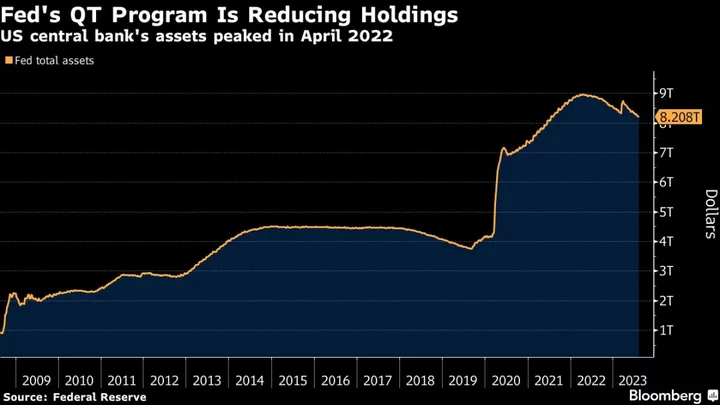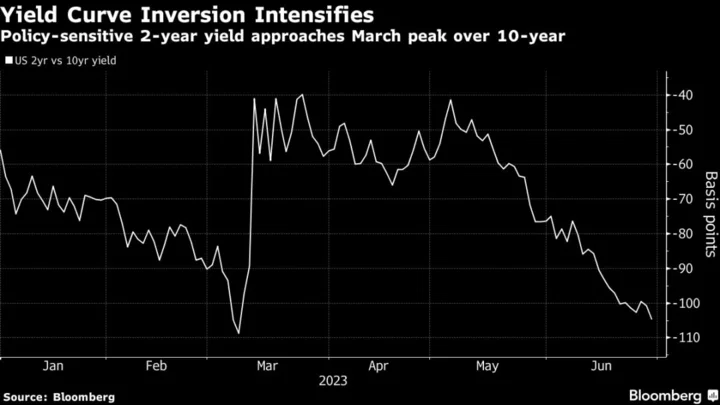Federal Reserve officials are more seriously discussing the possibility that they may not have to stop shrinking their massive balance sheet when they begin cutting interest rates, a readout from their most recent policy meeting showed.
“A number of participants noted that balance-sheet runoff need not end when the committee eventually begins to reduce the target range for the federal funds rate,” according to minutes of the US central bank’s July 25-26 policy meeting published Wednesday in Washington.
The approach — which some policymakers including Chair Jerome Powell have mentioned — could present communication challenges for the US central bank. That’s because reducing bond holdings — a process known as quantitative tightening, or QT — is usually interpreted as strategy for tightening monetary policy. Interest-rate cuts, however, work in the opposite direction, easing policy by lowering borrowing costs.
Read More: Fed Saw Significant Inflation Risk That May Merit More Hikes
The most recent economic projections released by Fed officials in June show policymakers expect to start reducing interest rates at some point next year.
While rate cuts are often aimed at cushioning or stimulating the economy — such as early in the pandemic — Fed officials this time are trying to keep rates from becoming too restrictive as inflation falls, with the goal of avoiding a downturn. For that reason, some officials have said such rate cuts might not necessarily undermine the Fed’s efforts to keep shrinking its portfolio.
“If we are lowering interest rates to get back to a neutral position, that wouldn’t be a reason to stop the decline,” Dallas Fed President Lorie Logan, who previously oversaw management of the Fed’s bond portfolio, said last month. “My expectation is that we have room for the balance sheet to continue shrinking for quite some time.”
Fed officials are keen to keep reducing their balance sheet, which ballooned in size during the pandemic as they snapped up Treasury securities and mortgage-backed securities to stabilize markets and support the economy. Since last June, the US central bank has been rolling some of those assets off the balance sheet as they mature, a process which is now happening at a pace of about $1 trillion a year.
Read More: Cash Exodus From Fed Facility Slows in Early Sign of Trouble
The Fed’s balance sheet now stands at about $8.2 trillion, down from nearly $9 trillion last year. But those efforts to keep the runoff going could be interrupted for reasons unrelated to rate cuts. The last time Fed officials were unwinding the balance sheet, they were forced to stop the runoff — and start intervening in money markets — when reserves in the banking system fell too low, causing rates on overnight repurchase agreements to spike.
As of late, more of the liquidity drain has come from a Fed tool known as the reverse-repo facility, where money-market funds can park cash with the central bank overnight. But now that the decline in usage of the so-called RRP has stalled, some analysts worry more cash could start leaking out of other segments of the financial system, such as bank reserves, which might cause the Fed to slow or stop QT if they hit levels viewed as scarce.
--With assistance from Alexandra Harris.









